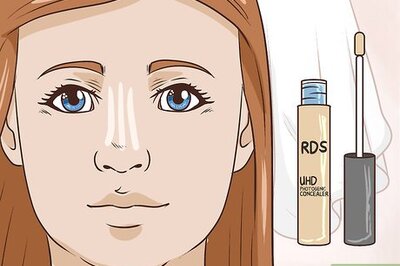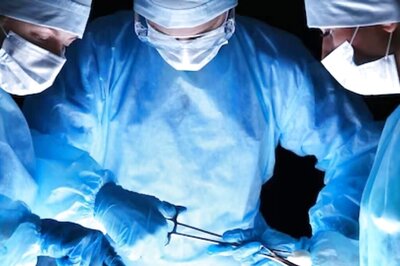
views
Washington: Can planet Mars support life? Probably not, suggests new research by a team led by an Indian American scientist.
Dust devils and storms on Mars produce oxidants that would render the planet's surface uninhabitable for life as we know it, says Sushil Atreya, University of Michigan professor in the Department of Atmospheric Oceanic and Space Sciences.
He is the lead author of one of two papers discussing these findings published in the Journal Astrobiology.
"As a consequence, any nascent life (micro organisms, for example) or even prebiotic molecules would find it hard to get a foothold on the surface of Mars, as the organic material would be scavenged efficiently by the surface oxidants," said Atreya, who studied at Rajasthan and Delhi universities before joining Michigan University.
The research for both papers was conducted by the Michigan University's Department of Atmospheric Oceanic and Space Sciences, NASA Goddard Space Flight Centre and the University of California, Berkley, with several other universities and institutes participating, according to a press release from the university.
The results also explain inconsistencies in earlier space experiments that sought to determine if Mars had or did support life.
Mars is thought to have formed with the same ingredients that on Earth led to the formation of molecules associated with life. Yet, organic molecules have never been detected on Mars' surface, Atreya said.
Scientists regard Mars as Earth's closest relative. "Of all the planets in the solar system, Mars resembles the Earth most. And outside of the Earth, it has the best chance of being habitable now or in the past when the planet may have been warmer and wetter," Atreya said.
Presence of life below the surface of Mars now or in the past is not ruled out by the new research.
It also helps explain contradictory results in a series of experiments in 1970s that suggested microscopic life might have been present in Martian soil.
Called the Viking Project, the primary objective was to determine if there was life - dead or alive - on Mars. Biological experiments conducted by the two landers, Viking 1 and 2, yielded conflicting results.
Atreya's paper calculated the excess carbon monoxide, hydroxyl and eventually hydrogen atoms produced when electric fields generated by dust devils and storms cause carbon dioxide and water molecules to split.
Hydrogen and hydroxyl have been known to play a key role in the production of hydrogen peroxide in the Martian atmosphere.
PAGE_BREAK
California University's Gregory Delory, senior fellow at the Space Sciences Laboratory, is the first author, with co-authors Atreya and William Farrell of NASA's Goddard Space Flight Centre, in Greenbelt, Maryland of this paper.
Atreya's team then calculated that the amounts of hydrogen peroxide produced during these reactions would be large enough to result in its condensation -essentially hydrogen peroxide would snow from the sky and contaminate the planet when it fell.
Atreya's paper suggests that the hydrogen peroxide would scavenge organic material from Mars, and it could also accelerate the loss of methane on Mars, requiring a larger source to explain the recent detection of this gas on Mars.
"Methane is a metabolic by-product of life as we know it, but presence of methane does not by itself imply existence of life on a planet", he said.




















Comments
0 comment